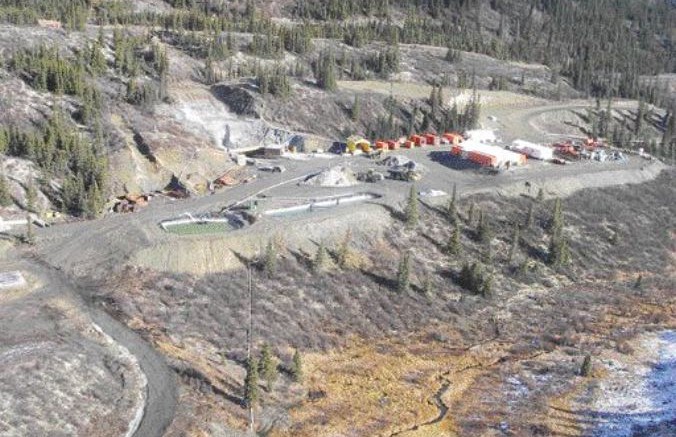Vancouver — Yukon Zinc (YZC-V, YZCCF-O) has tabled an “optimized feasibility study” that indicates positive economics for its Wolverine polymetallic project in the Finlayson District of southeastern Yukon.
The latest study comes several months after a feasibility delivered a “base-case” mining scenario that fell short of market expectations, triggering a collapse in the company’s share price.
Engineering firm Wardrop was the lead in the new study, which used essentially the same data as the previous feasibility, conducted by Hatch, and delivered the conclusion that “technically and economically, the Wolverine project is a viable project.”
Under the revised plan, underground operations at Wolverine are expected to produce about 53,400 tonnes (117.7 million lbs.) zinc, 4,860 tonnes (10.7 million lbs.) copper, 6,010 tonnes (13.2 million lbs.) lead, 4,933,200 oz. silver and 20,200 oz. gold annually in its first three years of full operation.
Wolverine’s diluted proven and probable reserves of 5.2 million tonnes grading 9.7% zinc, 282 grams silver per tonne, 0.9% copper, 1.4 grams gold and 1.3% lead are sufficient for eight years of operation. Upgrading an additional 4.5 million tonnes of measured and indicated resource (averaging 12.1% zinc, 355 grams silver, 1.2% copper, 1.7 grams gold and 1.6% lead) to reserves could add another three years of production at Wolverine.
Operating costs are estimated at $95.58 per tonne mined, leading to a life-of-mine cash cost of about US26 per lb. of zinc after byproduct metal credits.
Under the expanded production schedule, capital costs for the underground mine and processing infrastructure is expected to come in at about $183.2 million plus $24.3 million allocated for contingency and $15 million in working capital.
With a 2-year backward average metals price scenario (US$1.07 per lb. zinc, US$9.48 per oz. silver, US$1.85 per lb. copper, US52 per lb. lead and US$526 per oz. gold), the Wolverine mine is anticipated to generate average annual cumulative pretax cash flow of $72.6 million in its first three years and has a 26.3% pretax internal rate of return (IRR). Using current metals prices (as of November 2006), economics look much rosier with an average annual $146.4-million pretax cash flow and a 56.8% pretax IRR in the first three years.
Engineering studies suggest that a dense media separation (DMS) circuit on the run-of-mine ore is an effective preconcentration process, providing a higher-grade feed to the grinding and flotation circuits. It is expected that 1,700 tonnes per day of run-of-mine ore will be reduced to 1,400 tonnes per day of mill feed.
The deposit remains subject to a royalty on gold and silver production payable to Atna Resources (ATN-T, ATNAF-O). The royalty rate is indexed to silver prices; no royalty is paid below US$5 per oz. and 4% is payable when the metal trades between US$5 and US$7.50 per oz., rising to 10% when the price exceeds US$10 per oz.
Portions of the deposit are also subject to a 0.5% net smelter return (NSR) royalty capped at $500,000 and one claim covering part of the deposit carries a 1% NSR that drops to 0.5% after payments of $500,000.
Yukon Zinc’s development plans call for the construction of a 24-km all-weather gravel road connecting to the Robert Campbell highway, along with a 150-person on-site camp, and extension of the existing airstrip. Base metal concentrates are to be trucked about 860 km to the port at Stewart, B.C.
The company recently received its mining licence and is completing the final phases of its water licence process.
Project financing is under way with an advisory group recently appointed to assist Yukon Zinc in securing an equity investment in the project from a partner.
Shares of the aspiring miner rallied on the improved economics of the revised study, gaining 16%, or 4, to close at 29.5 apiece on trading volume of over 21 million. Based on Yukon Zinc’s 265.4 million shares outstanding, the company posts a $78-million market capitalization. Its stock has traded in a 52-week trading range of 19.5-$1.01.


Be the first to comment on "Revised feasibility study buoys Yukon Zinc"